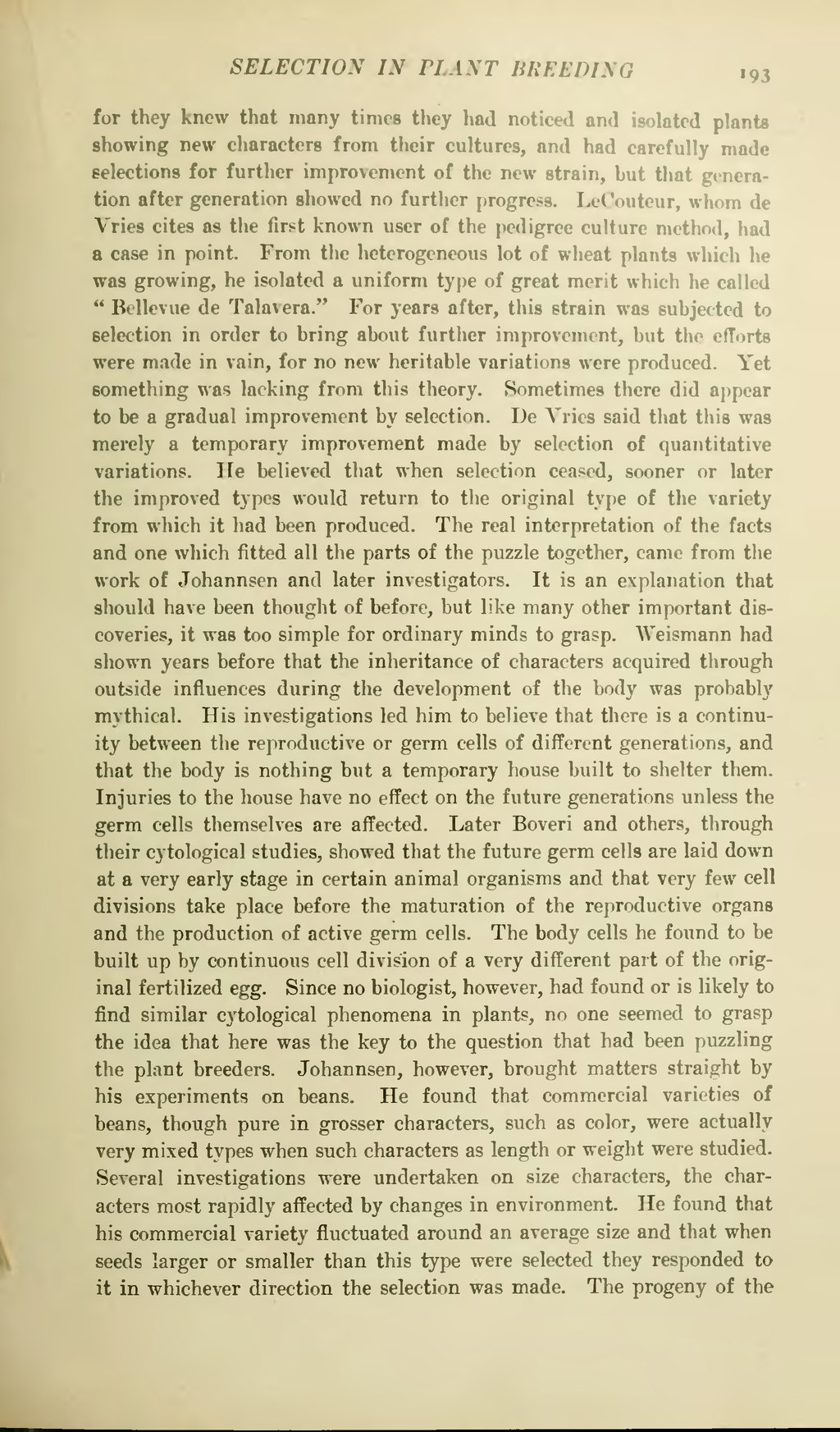for they knew that many times they had noticed and isolated plants showing new characters from their cultures, and had carefully made selections for further improvement of the new strain, but that generation after generation showed no further progress. LeCouteur, whom de Vries cites as the first known user of the pedigree culture method, had a case in point. From the heterogeneous lot of wheat plants which he was growing, he isolated a uniform type of great merit which he called "Bellevue de Talavera." For years after, this strain was subjected to selection in order to bring about further improvement, but the efforts were made in vain, for no new heritable variations were produced. Yet something was lacking from this theory. Sometimes there did appear to be a gradual improvement by selection. De Vries said that this was merely a temporary improvement made by selection of quantitative variations. He believed that when selection ceased, sooner or later the improved types would return to the original type of the variety from which it had been produced. The real interpretation of the facts and one which fitted all the parts of the puzzle together, came from the work of Johannsen and later investigators. It is an explanation that should have been thought of before, but like many other important discoveries, it was too simple for ordinary minds to grasp. Weismann had shown years before that the inheritance of characters acquired through outside influences during the development of the body was probably mythical. His investigations led him to believe that there is a continuity between the reproductive or germ cells of different generations, and that the body is nothing but a temporary house built to shelter them. Injuries to the house have no effect on the future generations unless the germ cells themselves are affected. Later Boveri and others, through their cytological studies, showed that the future germ cells are laid down at a very early stage in certain animal organisms and that very few cell divisions take place before the maturation of the reproductive organs and the production of active germ cells. The body cells he found to be built up by continuous cell division of a very different part of the original fertilized egg. Since no biologist, however, had found or is likely to find similar cytological phenomena in plants, no one seemed to grasp the idea that here was the key to the question that had been puzzling the plant breeders. Johannsen, however, brought matters straight by his experiments on beans. He found that commercial varieties of beans, though pure in grosser characters, such as color, were actually very mixed types when such characters as length or weight were studied. Several investigations were undertaken on size characters, the characters most rapidly affected by changes in environment. He found that his commercial variety fluctuated around an average size and that when seeds larger or smaller than this type were selected they responded to it in whichever direction the selection was made. The progeny of the
